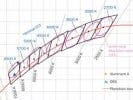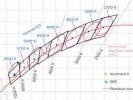The wonderful trends in LED lighting include increasing growth and adoption in the marketplace. One negative aspect, causing confusion to customers and manufacturers alike, relates to the specifications of LEDs, LED sub-assemblies and LED lighting systems. In many cases, these specifications are misleading.
A specific bewildering aspect is that of light output specifications. The light output, or luminous flux, of LED devices is typically evaluated using a pulse measurement at room temperature whereas LED fixtures should use steady state measurements. Thus, the announcements by LED manufacturers regarding efficacy values in excess of 100 lm/W (up to 150 lm/W) over the past months, while very encouraging, are unrealistic levels for LED lighting systems with these same devices.
+++++++
This article was published in the April 2007 issue of LEDs Magazine.
To read the full version of this article, please visit our Magazine page, where you can download FREE electronic PDF versions of all issues of LEDs Magazine.
You can also request a print copy of LEDs Magazine (available by paid subscription).






